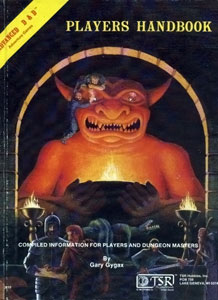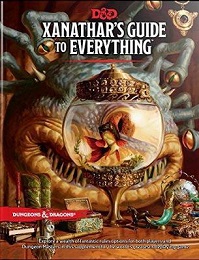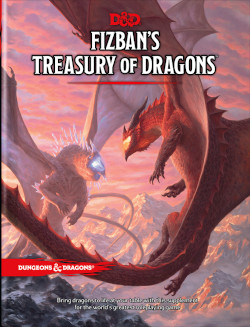Publication history
Dungeons & Dragons 3rd edition
The sorcerer class was introduced in third edition as being separate from the wizard class, having more in common with contemporary fantasy fiction than the Vancian spell system of previous editions. [1] Sorcerers were introduced in the 3rd edition Player's Handbook , [2] : 18 and updated in the 3.5 edition Player's Handbook.
Compared to wizards, sorcerers' instinctive grasp of magic has more flexibility within the moment but less versatility overall. [3] That is, they do not need to prepare specific spells in advance, but each sorcerer also acquires a much smaller number of spells, since they do not use spell books and cannot simply copy new spells from others' writing. Conversely, they do not worry about carrying spell books and having them stolen. Other effects of the sorcerers' intuitive approach are that they can cast more spells per day, but qualify for more powerful spells slightly more slowly than wizards.
Since sorcerers can only have a limited number of spells at their arsenal, most tend to specialize in the offensive magic that an adventurer will use most. While they gain only a few non-combat spells, they have perhaps more sheer destructive force than any other character class. Their biggest strength is also their most fundamental disadvantage: sorcerers lack the versatility of wizards, who can use any information on an adventure ahead to prepare spells from a wide range of options. The flexible sorcerer, however, can still choose which of his few spells to use or re-use next based on each new thing he learns in the adventure, regardless of any predictions. [3]
Sorcerers and wizards often disagree; wizards tend to think of sorcerers as sloppy and undisciplined, while sorcerers can consider wizards obsessive and distant.
Kobolds, wild elves, Chaos Gnomes (a subrace of Gnomes introduced in the Races of Stone supplement), Diaboli (an obscure race of anarchists from the Mystara Campaign setting, updated in Dragon magazine #327), and Spellscales (a humanoid draconic race from the Races of the Dragon supplement) all have Sorcerer as their favored class.
Dungeons & Dragons 4th edition
Sorcerers were among the classes presented in the 4th edition Player's Handbook II , and expanded on in Arcane Power .
The sorcerer is an arcane striker, with controller as a secondary role. Unlike other editions of the game, 4e sorcerers now have their own list of spells, rather than the same spells as the wizard. Sorcerers' attack spells generally use charisma; furthermore, many sorcerer spells benefit from high strength or dexterity. Sorcerers' sole class feature is spell source; there are several versions of spell source, one of which must be selected during character creation. Each version of spell source gives the sorcerer resistance to one damage type (which is fixed or variable depending on the version of spell source), gives the sorcerer a damage bonus based on either dexterity or strength, additionally, strength-based versions of spell source allow the sorcerer to use strength instead of dexterity or intelligence to determine AC while wearing light armor, and all versions of spell source give the sorcerer at least one additional benefit specific to that version of spell source, and many sorcerer powers have additional effects if a sorcerer has a specific version of spell source. In Player's Handbook II, two versions of spell source are presented: dragon magic and wild magic. Dragon magic refers to the belief that some sorcerers have draconic blood in their veins. Wild magic refers to a random, uncontainable magic that the sorcerer can tap into. In addition, the supplement Arcane Power introduces two more versions of spell source: storm magic and cosmic magic. [4]
Dungeons & Dragons 5th edition
Sorcerer are born with an innate magic, one they did not choose but cannot deny. [...] Most sorcerers find themselves drawn to a life of adventure sooner rather than later. The magic in their veins does not like to lie dormant. Those who don't learn to channel their power may find their gifts spilling out anyway, in unexpected and often unpleasant ways. [5]
The sorcerer was included as a character class in the 5th edition Player's Handbook with different subclasses defined by Sorcerous Origin. [6] [7] [8] They are given two Sorcerous Origins to choose from: Draconic Bloodline and Wild Magic. [9] [10] Several sourcebooks since the launch of 5th edition have expanded the number of origin options. Sword Coast Adventurer's Guide (2015) added the Sorcerous Origin of Storm Sorcery, which was then reprinted in Xanathar's Guide to Everything (2017) along with two new options: Divine Soul and Shadow Magic. [11] Tasha's Cauldron of Everything (2020) added two more origins: Aberrant Mind and Clockwork Soul. [12]
Draconic Bloodline sorcery draws its power from a draconic magic in the character's blood, imbuing the sorcerer with certain traits of that particular dragon type. Wild Magic sorcery draws its power from the chaos of wild magic giving the character unpredictable, but powerful, spell effects. Storm Sorcery draws the power of the storm, giving sorcerers the power to control the weather. Divine Souls draw their power from a divine source which grants them healing abilities. Shadow Magic comes from the Shadowfell which taints the user with the power of darkness and shadows. [11]
Reception
For the 3.5 edition, Dungeons & Dragons For Dummies recommended the sorcerer over the wizard as a starting arcane spellcaster: "Where the sorcerer approaches spellcasting more as an art than a science, working through intuition rather than careful training and study, the wizard is all about research. For this reason, the wizard has a wider selection of spells to call upon, whereas the sorcerer tends to be a specialist. As such, the sorcerer is slightly easier to play". [3]
Screen Rant rated the sorcerer class as the 5th most powerful class of the base 12 character classes in the 5th edition. [13]
The Gamer rated the 5th edition sorcerer subclass Shadow Magic as the 6th most awesome subclass out of the 32 new character options in Xanathar's Guide to Everything. [14]
Gus Wezerek, for FiveThirtyEight, reported that of the 5th edition "class and race combinations per 100,000 characters that players created on D&D Beyond from" August 15 to September 15, 2017, sorcerers were second to last in player creations at 7,587 total. Humans (1,324) were the most common racial combination followed by half-elf (1,258) and then tiefling (1,062). Wezerek wrote "when I started playing 'Dungeons & Dragons' five years ago, I never would have chosen the game’s most popular match: the human fighter. There are already enough human fighters in movies, TV and books — my first character was an albino dragonborn sorcerer. But these days I can get behind the combo’s simplicity". [15]
In the Dungeons & Dragons fantasy role-playing game, psionics are a form of supernatural power similar to, but distinct from, arcane and divine magic.

The Player's Handbook is the name given to one of the core rulebooks in every edition of the fantasy role-playing game Dungeons & Dragons (D&D). It does not contain the complete set of rules for the game, and only includes rules for use by players of the game. Additional rules, for use by Dungeon Masters (DMs), who referee the game, can be found in the Dungeon Master's Guide. Many optional rules, such as those governing extremely high-level players, and some of the more obscure spells, are found in other sources.
The magic in Dungeons & Dragons consists of the spells and magic systems used in the settings of the role-playing game Dungeons & Dragons (D&D). D&D defined the genre of fantasy role-playing games, and remains the most popular table-top version. Many of the original concepts have become widely used in the role-playing community across many different fictional worlds, as well as across all manner of popular media including books, board games, video games, and films.
The druid is a playable character class in the Dungeons & Dragons fantasy role-playing game. Druids wield nature-themed magic. Unlike clerics, druids do not have special powers against undead and, in some editions, cannot use metal armor. Druids have a unique ability that allows them to change into various animal forms, and various other qualities that assist them in natural settings.
The bard is a standard playable character class in many editions of the Dungeons & Dragons fantasy role-playing game. The bard class is versatile, capable of combat and of magic. Bards use their artistic talents to induce magical effects. The class is loosely based on the special magic that music holds in stories such as the Pied Piper of Hamelin, and in earlier versions was much more akin to being a Celtic Fili or a Norse Skald, although these elements have largely been removed in later editions. Listed inspirations for bards include Taliesin, Homer, Will Scarlet and Alan-a-Dale.

Unearthed Arcana is the title shared by two hardback books published for different editions of the Dungeons & Dragons fantasy role-playing game. Both were designed as supplements to the core rulebooks, containing material that expanded upon other rules.
The fighter is one of the standard playable character classes in the Dungeons & Dragons fantasy role-playing game. A fighter is a versatile, weapons-oriented warrior who fights using skill, strategy and tactics.
The Ranger is one of the standard playable character classes in most editions of the Dungeons & Dragons fantasy role-playing game. Rangers are skilled bushcraftsmen/woodcraftsmen, and often lived reclusive lives as hermits.
The paladin is one of the standard playable character classes in most editions of the Dungeons & Dragons fantasy role-playing game. The paladin is a holy knight, crusading in the name of good and order, and is a divine spellcaster.
A character class is a fundamental part of the identity and nature of characters in the Dungeons & Dragons role-playing game. A character's capabilities, strengths, and weaknesses are largely defined by their class; choosing a class is one of the first steps a player takes to create a Dungeons & Dragons player character. A character's class affects a character's available skills and abilities. A well-rounded party of characters requires a variety of abilities offered by the classes found within the game.
The rogue or thief is one of the standard playable character classes in most editions of the Dungeons & Dragons fantasy role-playing game. A rogue is a versatile character, capable of sneaky combat and nimble tricks. The rogue is stealthy and dexterous, and in early editions was the only official base class from the Player's Handbook capable of finding and disarming traps and picking locks. The rogue also has the ability to "sneak attack" enemies who are caught off-guard or taken by surprise, inflicting extra damage.
The cleric is one of the standard playable character class in the Dungeons & Dragons fantasy role-playing game. Clerics are versatile figures, both capable in combat and skilled in the use of divine magic (thaumaturgy). Clerics are powerful healers due to the large number of healing and curative magics available to them. With divinely-granted abilities over life or death, they are also able to repel or control undead creatures. Clerics also have specific 'domains' which usually align with the character's alignment and the god that cleric serves. Whether the cleric repels or controls undead is dependent on the cleric's alignment. It is the only class to be included in every edition of Dungeons & Dragons without a name change.
The barbarian is a playable character class in the Dungeons & Dragons fantasy role-playing game. The class was introduced in 1985 and went through a number of variations in subsequent editions of the game.
The monk is a playable character class in most editions of the Dungeons & Dragons fantasy role-playing game. A D&D monk is a fantasy martial artist, specializing in unarmed combat.
The wizard is one of the standard character class in the Dungeons & Dragons fantasy role-playing game. A wizard uses arcane magic, and is considered less effective in melee combat than other classes.
The warlock is a character class in the Dungeons & Dragons fantasy role-playing game. It was introduced as a non-core base class who practice arcane magic in the supplemental book Complete Arcane for the 3.5 edition of Dungeons & Dragons. In 4th and 5th edition, the warlock is a core class.

Dark Sun is an original Dungeons & Dragons (D&D) campaign setting set in the fictional, post-apocalyptic desert world of Athas. Dark Sun featured an innovative metaplot, influential art work, dark themes, and a genre-bending take on traditional fantasy role-playing. The product line began with the original Dark Sun Boxed Set released for D&D's 2nd edition in 1991, originally ran until 1996, and was one of TSR's most successful releases.
The artificer is a playable character class in the Dungeons & Dragons (D&D) fantasy role-playing game. The Artificer first appeared as a full class in the 3.5 edition of D&D and was introduced in the Eberron campaign setting. The artificer is a unique base class that reflects many of the core themes of Eberron.

Xanathar's Guide to Everything is a sourcebook for the 5th edition of the Dungeons & Dragons fantasy role-playing game published in 2017. It acts as a supplement to the 5th edition Dungeon Master's Guide and the Player's Handbook.

Fizban's Treasury of Dragons is sourcebook that focuses on dragons in the 5th edition of the Dungeons & Dragons fantasy role-playing game and was published October 26, 2021. The book adds a variety of draconic themed options for both players and Dungeon Masters.




